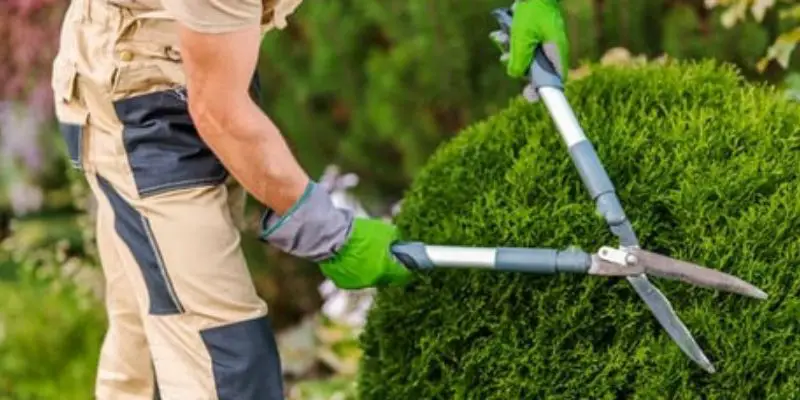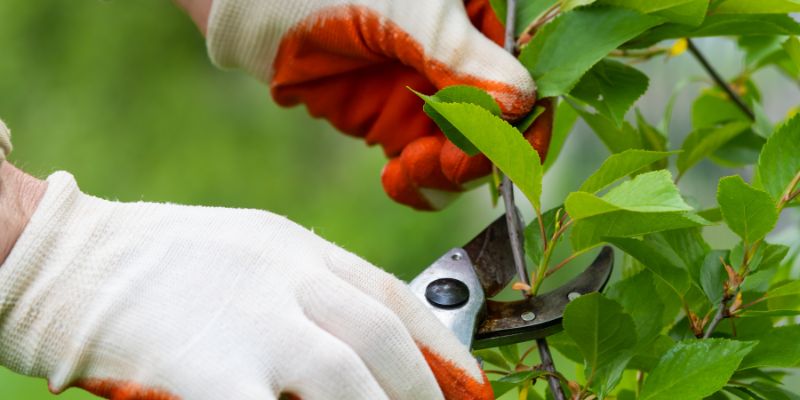As a professional gardener with over 20 years growing gorgeous roses, I get asked frequently about how to properly trim drift roses to maximize their appearance and blooming. Drift roses, with their cascading mounded growth habit, do require specialized pruning compared to other roses. Proper trimming encourages more prolific flowering while controlling growth.
In this comprehensive guide, I’ll cover everything you need to know about how to trim drift roses successfully. You’ll learn all about when to trim them, preparation tips, what equipment to use, how to shape them, and additional care and maintenance. I’ll share my proven insider techniques so you can have the most eye-catching drift roses on the block.
When to Trim Drift Roses
Here is an overview of when to trim drift roses over the course of a year:
Spring Pruning
In early spring before new growth emerges, trim back older wood and any dead or damaged canes from winter. This initial pruning shapes the plant.
Deadheading Spent Blooms
As your drift roses flower during the season, be sure to promptly deadhead (remove) spent blooms. This encourages continuous new blooming.
Shaping Mid-Summer
In mid-summer, do light trimming to maintain the cascading shape and contain size. Don’t overdo it to avoid reducing blooms.
Late Summer Pruning
Do a second heavier pruning in late summer to re-shape overgrown plants. This also removes faded blooms and prepares for winter.
Fall Cleanup
Before winter, do a final cleanup pruning. Tidy up plants, remove old leaves/debris, and trim any errant growth.
Preparing to Trim Drift Roses
Here are some tips to prepare for trimming your drift roses:
- Choose cool mornings after dew has dried when the plant is hydrated to minimize stress.
- Disinfect your bypass pruners with isopropyl alcohol to prevent disease transmission between plants.
- Wear thick rose gloves for protection against thorns. Eye protection is also recommended.
- Have a wheeled yard waste cart nearby to collect trimmings for disposal.
- Consider your goals, whether containing size, promoting blooms, or improving shape. This will dictate what to trim.
- Start by removing any dead, damaged or diseased stems and foliage which should always be the priority.
The Right Pruning Equipment
Having quality tools makes pruning easier and improves results. Here is the optimal equipment for trimming drift roses:
Bypass Pruners – Make precise, clean cuts compared to anvil pruners. More readily slices through thicker rose stems.
Loppers – Long handles provide leverage to cut older growth that’s beyond pruner capacity.
Hedge Shears – Quickly shape mounded drift roses when a looser, more natural form is desired. Avoid excessive shearing.
Rose Gloves – Protect your hands from painful thorns. Leather gloves hold up best to constant prickles.
Eye Protection – Safety glasses shield your eyes from snapping debris when pruning.
Yard Waste Cart – Collect cuttings neatly for easy disposal. Carts beat awkward bundles.
How to Trim Drift Roses
Here are effective techniques to prune your drift roses for maximum beauty:
- Deadhead spent blooms promptly by cutting back to the first set of healthy leaves. This redirects the plant’s energy into new bud production instead of hips.
- Remove weak inward facing stems that crowd the center of the plant. Outward stems with blooms should be favored.
- Make cuts at a 45 degree angle just above outward facing buds or stems to encourage bushy new growth.
- If reducing size significantly, prune back the main stems by a few inches using the 1/3rd rule. Never remove more than 1/3 of overall growth.
- Lightly shape overgrown plants after initial spring pruning. Avoid heavy shearing which removes too many blooms and flowering stems.
- Prune suckers sprouting below the graft union completely. These weaker stems sap energy from the main plant.
- Disinfect pruners often between cuts to prevent transmitting diseases. Clean debris from tools regularly.
Caring for Drift Roses After Trimming
Proper aftercare following pruning promotes plant health:
- Water thoroughly after significant pruning to aid recovery.
- Apply a dilute foliar fertilizer containing micronutrients to encourage new growth.
- Monitor for pests like aphids that can attack stressed plants and treat if found.
- Add a fresh layer of mulch around the base to conserve moisture and suppress weeds.
- Inspect for any damaged or diseased remaining canes and remove if found.
- Allow plenty of sunshine and air circulation to minimize disease problems after trimming.
- Remove trimmings with fallen leaves from around plants to prevent harboring issues.
Follow these aftercare tips and your drift roses will quickly bounce back more beautiful than ever after pruning.
FAQ About How to Trim Drift Roses
Here are answers to some frequently asked questions about trimming drift roses properly:
1. How often should you trim drift roses?
Plan on pruning drift roses at least 3 times per year – in early spring, midsummer, and late summer. Deadhead spent blooms regularly during the season too.
2. What is the best tool for pruning drift roses?
Quality bypass hand pruners are ideal for most drift rose pruning tasks. They make clean, precise cuts compared to anvil pruners.
3. When should you trim drift roses for winter?
Do a final pruning for winter in early fall after blooming slows. Remove old growth and errant stems. This prepares plants for dormancy.
4. How much should you prune drift roses?
Stick to no more than 1/3 of the plant’s overall growth when reducing size. For light shaping, just trim errant stems as needed. Never shear radically.
5. Do drift roses bloom on old or new wood?
Drift roses bloom on both old and new wood. Prune judiciously to remove only weak and unproductive older stems to maximize blooms.
6. Should drift roses be deadheaded?
Yes, promptly deadhead spent drift rose blooms back to the first healthy leaf set. This encourages the plant to produce new buds instead of diverting energy to hips.
Conclusion
I hope this guide has taken the mystery out of how to trim drift roses in your garden for maximum beauty and prolific blooming. Follow my tips on techniques and timing along with providing attentive aftercare. With a bit of practice, you’ll be pruning drift roses like a pro in no time! Your efforts will be rewarded with stunning cascades of colorful flowers.

Michael Glenn is a certified arborist and horticultural expert with over 15 years of experience in the landscape industry. His passion for plants and trees has led him to become a sought-after authority on pruning and trimming techniques. Glenn’s in-depth knowledge of proper pruning methods, timing, and tools has helped countless homeowners and professionals maintain healthy, aesthetically pleasing gardens and landscapes.
In addition to sharing his pruning expertise through practical tips, step-by-step guides, and expert advice, Glenn is also a respected author of pruning tool buying guides. His comprehensive reviews and comparisons ensure readers can make informed decisions when investing in quality loppers, pruning shears, saws, and other essential equipment. With a deep understanding of plant biology and sustainable practices, Glenn’s writing empowers audiences with the knowledge needed to properly care for green spaces.





